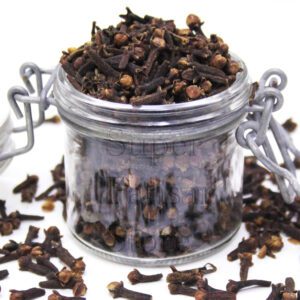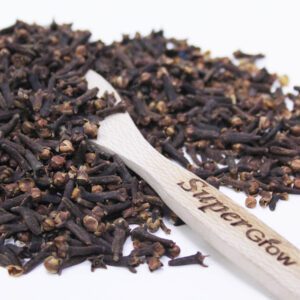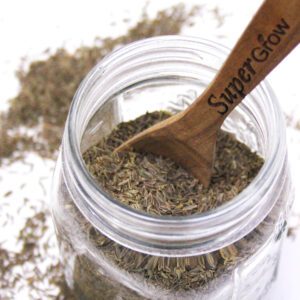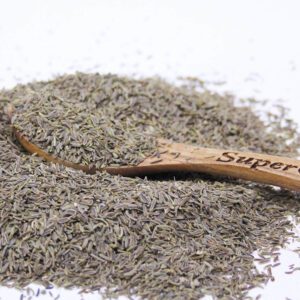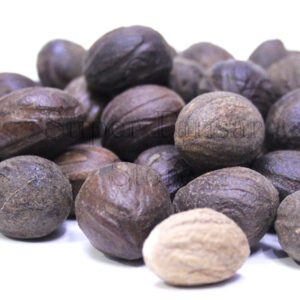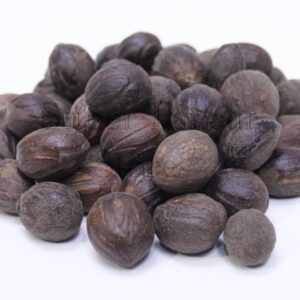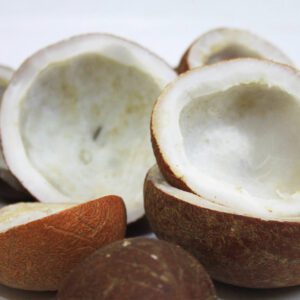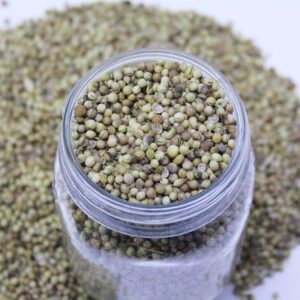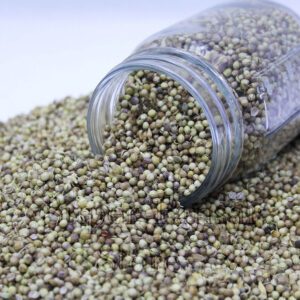White Pepper (Safeed Mirch) مرچ سفید
₨ 250 – ₨ 3,250
- Premium Quality
- Fresh
- Organic
- Safely processed and packed
Overview
White pepper comes from black pepper. Black pepper is known as the “King of Spices.” And this King of spices comes with another excellent culinary companion. That is white pepper. As the name rightfully suggests, white pepper comes in white and gray hues. They are similar in shape to black pepper. White pepper is scientifically known as Piper Nigrum and comes from the Piperaceae family. White pepper brilliantly complements the flavor of any recipe. So, if you are a fan of black pepper, white pepper will be the perfect addition to your spice cabinet.
Benefits
Digestive Health:
Like black pepper, white pepper may have digestive benefits. It stimulates the production of stomach acid, which can aid in digestion.
Anti-Inflammatory Properties:
Piperine, the active compound in both black and white pepper, has been studied for its potential anti-inflammatory effects. It may help reduce inflammation in the body.
Antioxidant Activity:
White pepper, like black pepper, contains antioxidants that can help neutralize free radicals. Antioxidants are important for overall health and may contribute to disease prevention.
Weight Management:
Some studies suggest that the piperine in white pepper may interfere with the formation of new fat cells. This could potentially be beneficial for weight management, although more research is needed.
Respiratory Health:
In traditional medicine, white pepper has been used to alleviate respiratory issues, such as coughs and congestion. The warming properties of pepper are thought to help with respiratory discomfort.
Cognitive Function:
Piperine has been investigated for its potential cognitive-enhancing effects. It may improve cognitive function and protect against age-related cognitive decline, though more research is necessary.
Enhanced Nutrient Absorption:
Piperine is known to enhance the absorption of certain nutrients, such as curcumin from turmeric. When combined with other spices or herbs, white pepper may increase the bioavailability of their beneficial compounds.
Natural Antibacterial Properties:
Some studies suggest that white pepper, like black pepper, may have natural antibacterial properties. Piperine has demonstrated inhibitory effects against certain bacteria.
Aid for Respiratory Conditions:
White pepper has been used in traditional medicine to alleviate respiratory conditions, such as asthma and bronchitis. The warming effect of white pepper is believed to help in clearing respiratory passages.
Uses
White pepper is a versatile spice with a milder flavor compared to black pepper. It is commonly used in various culinary applications to add a subtle heat and aroma to dishes. Here are some common uses of white pepper in cooking:
Soups and Stews:
White pepper is often used in soups and stews, where its mild flavor can enhance the overall taste without overpowering the dish.
Creamy Sauces:
White pepper is a popular choice in creamy sauces, such as Alfredo sauce or béchamel. Its color blends well with the light color of the sauce, and its flavor complements the richness of the dish.
Mashed Potatoes:
White pepper is commonly added to mashed potatoes to season them subtly. Its fine texture allows for even distribution throughout the dish.
Seafood Dishes:
The mild heat of white pepper makes it suitable for seasoning delicate seafood dishes, allowing the natural flavors of the seafood to shine.
Egg Dishes:
White pepper is often used in egg-based dishes, including scrambled eggs, omelets, and quiches. Its mild flavor complements the eggs without overwhelming them.
Asian Cuisine:
White pepper is a staple in many Asian cuisines, particularly in Chinese and Thai dishes. It is often used in stir-fries, noodle dishes, and various sauces.
Poultry Seasoning:
White pepper pairs well with poultry and is commonly used in seasoning dishes like roast chicken or turkey.
Light-colored Sauces and Gravies:
White pepper is preferred in dishes with light-colored sauces or gravies, where the dark specks of black pepper may not be visually appealing.
Vegetables:
Use white pepper to season steamed or sautéed vegetables, allowing their natural flavors to come through without adding a strong pepper taste.
Cheese Dishes:
White pepper can be used in dishes featuring mild cheeses, such as macaroni and cheese or cheese sauces.
Pickling:
White pepper is sometimes used in pickling recipes to add a subtle spiciness to the pickling liquid.
Marinades:
Incorporate white pepper into marinades for meats, especially if you want to avoid the visual impact of black pepper in lighter-colored dishes.
Sauces for Poultry or Pork:
White pepper works well in sauces for poultry or pork, providing flavor without overpowering the meat.
Asian-inspired Broths:
White pepper is commonly used in Asian-inspired broths, such as those for noodle soups or hot pots.






